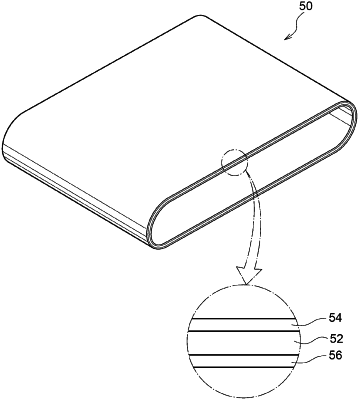| CPC G03G 15/162 (2013.01) [F16G 1/06 (2013.01); G03G 15/0131 (2013.01); G03G 15/1605 (2013.01); G03G 15/206 (2013.01); G03G 15/2053 (2013.01); G03G 15/2057 (2013.01); G03G 2215/00139 (2013.01); G03G 2215/1623 (2013.01); G03G 2215/2009 (2013.01); G03G 2215/2016 (2013.01); G03G 2221/1615 (2013.01)] | 15 Claims |

|
1. An endless belt comprising:
a base material layer containing a polymer material and conductive particles,
wherein, in an image obtained by observing a cross section taken along a thickness direction of the base material layer with an atomic force microscope, a proportion of a total area Ap of cross sections of all the conductive particles is 9.0% or more and 14.5% or less with respect to a total cross-sectional area At of the base material layer, and a proportion of a total area Ab of cross sections of conductive particles having an area of 0.01 μm2 or more among cross sections of the conductive particles is 28.0% or more and 65.0% or less with respect to the total area Ap of cross sections of all the conductive particles.
|